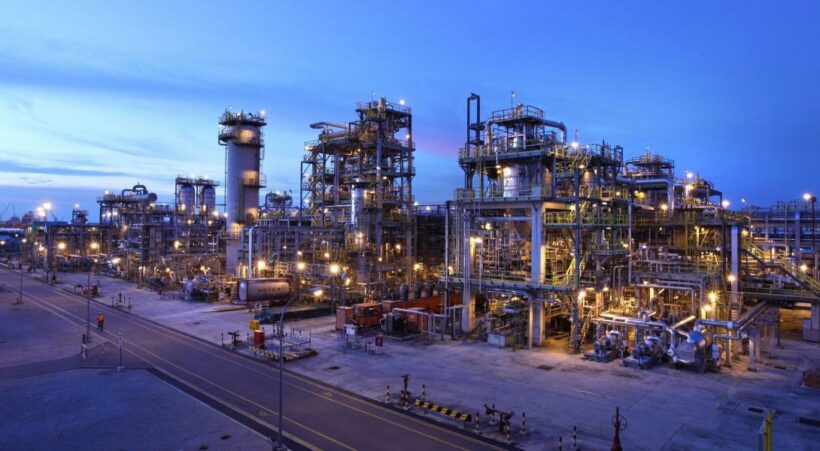“Petrochemical feedstock” refers to raw materials derived from petroleum (crude oil) that are used as inputs in the production of various chemicals and materials, collectively known as petrochemicals.
These petrochemicals are the building blocks for a wide range of products, including plastics, synthetic rubber, fibers, solvents, detergents, adhesives, and more.
Petrochemical feedstocks are typically hydrocarbons, which are molecules composed of hydrogen and carbon atoms. These feedstocks are extracted from crude oil through refining processes and then further processed in petrochemical plants to create a variety of end products.
Some common examples of petrochemical feedstocks
- Ethylene: Derived from ethane or naphtha, ethylene is a key building block for plastics like polyethylene, which is used in packaging, containers, and other products.
- Propylene: Also obtained from ethane or naphtha, propylene is used in the production of plastics, synthetic rubber, and various chemicals.
- Benzene: Derived from naphtha, benzene is a fundamental ingredient in the production of a wide range of chemicals, including plastics, synthetic fibers, detergents, and pharmaceuticals.
- Xylene: Obtained from reformate or other sources, xylene is used in the production of plastics, synthetic fibers, and various chemicals.
- Butadiene: Derived from cracking processes, butadiene is a critical component in the production of synthetic rubber and plastics.
- Methanol: Often produced from natural gas, methanol is used as a feedstock for chemicals, solvents, and plastics.
- Toluene: Derived from reformate, toluene is used in the production of chemicals, plastics, synthetic fibers, and more.
The availability and cost of these petrochemical feedstocks can have a significant impact on the industries that rely on them for production.
The petrochemical industry has been exploring ways to diversify feedstocks by using alternative sources, such as natural gas or biomass, to reduce its reliance on traditional petroleum-based feedstocks and to make the production process more sustainable.
Petrochemical feedstock’s price impact on companies share price
The price of petrochemical feedstocks can have a significant impact on the share price of companies that are involved in the production and utilization of petrochemicals. Here’s how:
Cost of Production: Petrochemical feedstocks are a major cost component for companies in the petrochemical industry. When the prices of these feedstocks rise, it increases the cost of producing petrochemical products such as plastics, synthetic rubber, and chemicals. This can lead to reduced profit margins for companies, especially if they are unable to pass on the increased costs to consumers by raising product prices.
Earnings and Profits: Higher feedstock prices can lead to lower earnings and profits for petrochemical companies. When their costs rise due to expensive feedstocks, it can negatively impact their financial performance, which, in turn, can influence investor perception of the company’s financial health and prospects.
Demand and Consumption: If petrochemical feedstock prices rise significantly, it can lead to a decrease in demand for petrochemical products. Consumers and industries may look for alternative materials or products that are less reliant on petrochemicals, especially if the higher feedstock costs lead to higher product prices. Reduced demand can result in lower sales volumes for petrochemical companies, which can impact their revenues and ultimately their profitability.
Investor Sentiment: The price of petrochemical feedstocks is often influenced by broader factors such as oil prices, geopolitical events, and supply-demand dynamics in the energy sector. These factors can impact investor sentiment towards petrochemical companies. For instance, if oil prices rise due to supply disruptions or geopolitical tensions, it can increase the cost of feedstocks, potentially leading to a negative perception among investors about the company’s future earnings and growth prospects.
Competitive Landscape: Companies in the petrochemical industry operate in a competitive environment. When feedstock prices rise, companies may face challenges from competitors that can produce similar products using cheaper feedstocks or alternative materials. This can affect market share and pricing dynamics, influencing a company’s overall performance and share price.
Hedging and Risk Management: Some petrochemical companies engage in hedging strategies to mitigate the impact of feedstock price fluctuations. These strategies can help stabilize costs and provide more predictability in earnings. However, the effectiveness of these strategies can vary, and if a company’s hedging positions are not well-managed, it can still be exposed to price risks.
In summary, the price of petrochemical feedstocks directly affects a petrochemical company’s cost structure, profitability, and competitive position.
Investors closely monitor these factors and assess how changes in feedstock prices may impact the company’s financial performance and growth prospects, which can influence buying and selling decisions and, consequently, the company’s share price.
How to analyze “Petrochemical feedstock’s price”
Analyzing petrochemical feedstock prices involves a combination of understanding market dynamics, industry trends, and economic factors. Here’s a step-by-step guide on how to analyze petrochemical feedstock prices:
- Understand Market Fundamentals:
- Learn about the different types of petrochemical feedstocks and their uses in various industries.
- Study the supply chain of petrochemicals, including the extraction of feedstocks from crude oil, refining processes, and final products.
- Familiarize yourself with the key factors that influence feedstock prices, such as crude oil prices, geopolitical events, supply-demand balance, and global economic conditions.
2. Monitor Crude Oil Prices:
- Crude oil is a primary source of many petrochemical feedstocks. Changes in crude oil prices can have a significant impact on feedstock costs.
- Keep track of international crude oil benchmarks like Brent and WTI, and analyze their trends and potential impact on feedstock prices.
3. Supply-Demand Analysis:
- Study supply and demand dynamics for specific petrochemical feedstocks. Factors like production capacity, utilization rates, and global consumption patterns can affect prices.
- Analyze historical and current supply-demand balances to identify trends and potential imbalances.
4. Global Economic Conditions:
- Economic growth and industrial activity have a direct impact on petrochemical consumption and feedstock prices.
- Monitor macroeconomic indicators, such as GDP growth, industrial production, and manufacturing activity in key markets.
5. Geopolitical and Regulatory Factors:
- Geopolitical events, conflicts, sanctions, and regulatory changes can disrupt supply chains and impact feedstock prices.
- Stay informed about geopolitical developments and regulatory changes in major petrochemical-producing regions.
6. Weather and Natural Disasters:
- Natural disasters, extreme weather, and other environmental factors can disrupt production, transportation, and supply of petrochemical feedstocks.
- Monitor weather patterns and assess potential risks to supply.
7. Technological Developments:
- Advances in technology and innovation can impact the production of petrochemical feedstocks and alternative materials.
- Stay updated on technological trends that could influence feedstock availability and pricing.
8. Industry Reports and Analysis:
- Utilize industry reports, market research, and analyses from reputable sources to gain insights into petrochemical feedstock trends.
- Pay attention to forecasts and expert opinions on feedstock price movements.
9. Correlation with End Products:
- Understand the relationship between petrochemical feedstock prices and the prices of end products, such as plastics and chemicals.
- Analyze how changes in feedstock prices might affect the demand and pricing of finished goods.
10. Financial and Investment Analysis:
- Evaluate the financial performance of petrochemical companies, considering their cost structures and exposure to feedstock price fluctuations.
- Assess the effectiveness of hedging strategies and risk management practices employed by companies.
11. Data Analysis Tools:
- Utilize data analysis tools and software to track historical prices, create price charts, and perform statistical analysis.
12. Scenario Analysis and Risk Management:
- Consider different scenarios, such as supply disruptions, price shocks, and economic downturns, to assess potential risks and their impact on feedstock prices.
By combining these steps and staying informed about the various factors that influence petrochemical feedstock prices, you can develop a comprehensive analysis that informs your understanding of market trends and potential investment opportunities or risks.
FAQ
Petrochemical feedstock refers to raw materials derived from petroleum or natural gas that are used in the production of various chemicals and petrochemical products. These feedstocks can be further processed to create a wide range of products, including plastics, fertilizers, solvents, and more.
There are two primary types of petrochemical feedstock: olefins and aromatics. Olefins include ethylene, propylene, and butadiene, while aromatics consist of benzene, toluene, and xylene. These feedstocks serve as the building blocks for the production of plastics, synthetic rubber, resins, and other chemical products.
Petrochemical feedstock is typically obtained through the refining of crude oil or the processing of natural gas. Crude oil is refined in oil refineries to produce various fractions, and some of these fractions can be used as feedstock. Natural gas can also be processed to obtain feedstock components. After sourcing, the feedstock undergoes various chemical processes, including cracking, reforming, and polymerization, to convert them into valuable petrochemical products.





